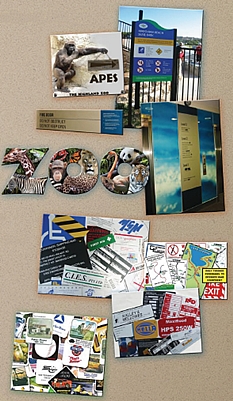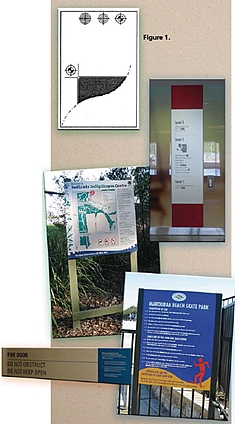The Alumicolor technology opens the pores of anodized , Alumicolor then ‘roughens the walls’ of these pores to enable highly stable dyes to be printed into the anodic layer. A thermochemical sealing process then locks in dyes and the resultant image offers remarkable clarity and durability. Images created by the Alumicolor process can be reproduced from photographs, artwork, or any other source of illustration.
Discover the Alumicolor Difference
- A high-resolution graphics solution for aluminum signage, recognition, commemoration, way finding, equipment labels, bar coding, public art, etc.
- Cutting-edge technology embeds a four-color image into the aluminum
- Provides an anodized reproduction of unsurpassed durability
- Designed for interior and exterior installations
- Anodized aluminum is 60 times, harder than regular aluminum allowing for greater resistance to sun, sand, rain, snow, heat saltwater, wind, graffiti, scuffing, grease and chemicals
- Scratch and abrasion resistant
- Unparalleled UV fade resistance
- Will not chip, creak or peel
- Ideal for one-of-a-kind custom signs or multiple-piece systems

Diverse applications include:
Architectural
- Signs — Interpretive, Directional, Regulatory
- Way finding
- Awards
- Trophies
- Plaques
- Letters
- Murals and artwork
- Decorative accents
Industrial
- Manufacturer ID plates
- Sequential barcodes
- Equipment instruction panels
- Asset ID tags
- Serial number tags
Product specifications
Basic Specifications
Maximum Print Area – including crop and registration marks per single panel – 48”x36” – large sizes available by ”tiling” panels together and laminating to full size backing plates. There is not a minimum size.
Film – Film positives are used to achieve accurate reproduction required to produce our exceptional clarity. Saxton in-house film production uses the best technology available-but results depend on the quality of the files provided-please read the following art requirements Note: Maximum films size is 48”x36”.
Art Requirements Preferred: High resolution illustrator .PDF files with embedded fonts and crop marks-all blacks 100% black not CMYK. The same applies to spot colors, through virtually all graphic program files on both Mac and PC platforms are supported on our systems. Picture images should be a minimum 300 dpi CMYL at finish size,.tiff files are preferred. Saxton’s graphics department is available for art creation and alteration upon request.

Generic
1. There are no white dyes available and therefore the natural silver of the aluminum will appear whenever white occurs in the original Photo or graphic image.
2. Every sheet of aluminum used varies by very slight margins in the depth of its pores which affects the depth of dye being deposited. This in important to explain to prospective clients as in almost all cases when explained a very slight variance in color due to a unique process is acceptable.
3. All cut/crop marks to run to the size of the job. Reversed out where solid color appears at the edges. (see figure 1.)
4.. Registration marks to be placed outside cut marks and be of a. 19- inch diameter cross with multiple circles (targets).
Crop marks and registration marks at full size.(see figure 1.)
